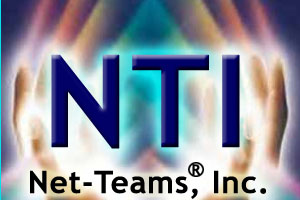 |

How is the Weekly Spot Uranium Price Calculated? |
|
|
Submitted by Janeane Carnagie
| RSS Feed
| Add Comment
| Bookmark Me!
Trading in the uranium market is done by a very small number of players. After all, there are about 440 nuclear reactors worldwide, a few dozen trading firms, fuel managers, and a relatively small number of utilities who participate in the actual buying of uranium. It’s the front end of the nuclear fuel cycle. Without it, nuclear reactors shut down. The uranium price has been skyrocketing since Christmas week 2000, with no end in sight. Forecasts range from $50/pound to well above $100/pound. Few believe the spot uranium price will go lower in the near future.
It’s become a fun game. Every Tuesday night (Monday afternoon, if you are a subscriber to the Ux Consulting), you will see the spot uranium price posted on the company’s front webpage. Moments later, the Yahoo and other Internet chat boards light up with commentary about the current uranium price and where it might head next. The spoiler is that TradeTech LLC issues its spot uranium price on Friday to subscribers and to the general public on Sunday night. Investors have been betting on the price swings of their favorite junior uranium stocks (more leverage, more risk/reward) by trying to second-guess the uranium spot price. Now, you can find out exactly how Ux C arrives at their weekly spot uranium price, from the president of Ux C, himself: Jeff Combs.
StockInterview: How does Ux Consulting arrive at your weekly spot uranium price?
Jeff Combs: We have a pretty specific definition. What we’re looking for is the lowest offer of which we are aware, at around the time we publish the price. The quantity being offered has to meet certain parameters. It has to be a certain size transaction within a certain timeframe. So we’re not really trying to cover transactions, per se. Obviously, where there is a transaction that takes place, there’s an offer embodied in that. We’re really trying to capture where the market is going based on current offers, rather than where it has been.
StockInterview: So is your published spot price more of a predictor than an actual trade?
Jeff Combs: It’s a predictor only in the sense that the next deal is likely to be done at the lowest offer price if the market is working efficiently. It’s like in the stock market where the lowest offer price will be taken first, although the stock market is a lot more efficient than the uranium market. Thus, we aren’t predicting the price of the next deal per se, but reporting the lowest offer price, which is an indication of where the sell side of the market is at that point in time.
StockInterview: So the weekly published spot uranium price is not based upon an actual sale of uranium that took place that past week?
Jeff Combs: Since it’s more of a forward-looking concept, the sale – that is, the coming together of buyer and seller - hasn’t necessarily taken place. But the level of the lowest offer indicates where the market is at that point in time. The sale itself shouldn’t deviate much, if any, from the offer price. This is especially true in a sellers’ market, where buyers don’t have much negotiating power. But it’s also true in a buyers’ market, as sellers are looking to offer an attractive enough price to encourage the buyer to take the material.
|
|
 |

|
|
LinkedIn Recommendation:
 Wynell Kennaugh - Senior SEM Consultant at Colonial Movers - If you are looking for a social media guru, this guy's it! I am wondering why he doesn't have his own plane. He doesn't... I asked! I hope he makes it out my way! Would love to meet him! Highly recommended for anything with social media marketing, programming and even general knowledge on just about anything. The guy is well read! - March 17, 2012, Wynell was Teo's client Wynell Kennaugh - Senior SEM Consultant at Colonial Movers - If you are looking for a social media guru, this guy's it! I am wondering why he doesn't have his own plane. He doesn't... I asked! I hope he makes it out my way! Would love to meet him! Highly recommended for anything with social media marketing, programming and even general knowledge on just about anything. The guy is well read! - March 17, 2012, Wynell was Teo's client |
|
Featured [Stock Market] Articles:
|
 |
